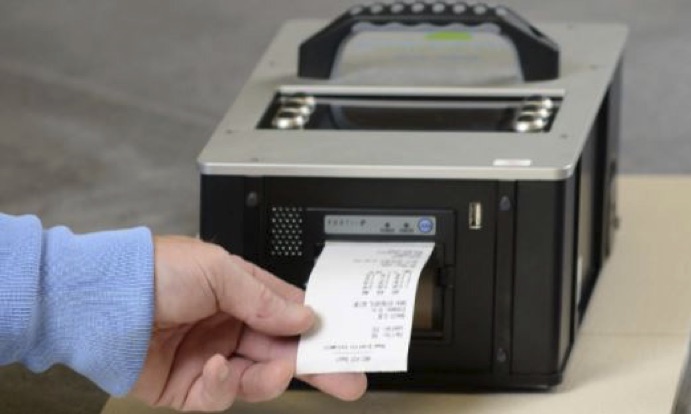QUESTION
I’m looking for a straightforward synopsis of DCOF rating requirements for interior and exterior tile. I’m finding a lot of long-winded articles, but nothing clear and concise, especially related to exterior. Do you know where I could find that?
ANSWER 1
I’m not aware of a simple formula for determining required DCOF for a given installation.
Tiles are tested to determine their Dynamic Coefficient of Friction using a machine that mimics the start/stop/pivot motion of a human step. The test is done with the tile lying flat and a slightly slippery liquid applied to its surface. The testing machine produces a decimal number, e.g. 0.42, that depicts the slip resistance of the tile under the prescribed test conditions.
A tile with a DCOF rating of 0.42 may work well in a given situation. Differing situations may require a different DCOF. For example, an exterior public pool deck that is pitched for drainage and is exposed to very wet conditions will likely need a tile with a higher DCOF than a private bath floor that is flat, has occasional use and gets slightly wet.
– Mark Heinlein, NTCA Training Director
ANSWER 2
For a straightforward overview of the DCOF, go to the 2019 edition of the TCNA Handbook on page 4. You should also review the ANSI A137.1 Specifications for Ceramic Tile section 6.2.2.1.10 found on pages 15-16 and section 9.6.1 found on pages 24-29.
As you review this standard, you will find this statement in part, “The standard now requires a minimum wet DCOF AcuTest value of 0.42 for ceramic tiles for level interior spaces expected to be walked upon when wet.”
The DCOF test is conducted using the BOT 3000, or an equivalent, to test individual non-installed tiles using a solution of SLS (Sodium-Lauryl Sulfate) in a 0.05% concentration with the BOT 3000 traveling 10” across the tested tile. Realize that the tested tile and tiles out of the box may and most times will have a different DCOF than an in-service installed tile. Factors such as environmental conditions immediately after a rain storm, melting snow, oil, grease, maintenance regimen and/or any other elements that reduce traction, create slippery conditions where the risk of a slip cannot be completely eliminated.

To paraphrase the standard, the DCOF test only applies to interior level surfaces expected to be walked on when wet. It does not cover tiles installed on exterior applications, sloped surfaces, areas exhibiting poor drainage, or polished products.
If needed or required, the services of a company utilizing the BOT 3000, or equivalent device, can be used to test an on-site tile installation to determine its DCOF.
– Scott Carothers, Director of Certification and Training, Ceramic Tile Education Foundation
RESPONSE
At least I know it wasn’t just me who couldn’t find information on the exterior standard. This information does help, and I’ll keep it to reference, but for my specific situation running a test wouldn’t work, timing-wise.
It sounds like there’s a need for an exterior standard, but I’m guessing this hasn’t happened because conditions can vary so greatly.









